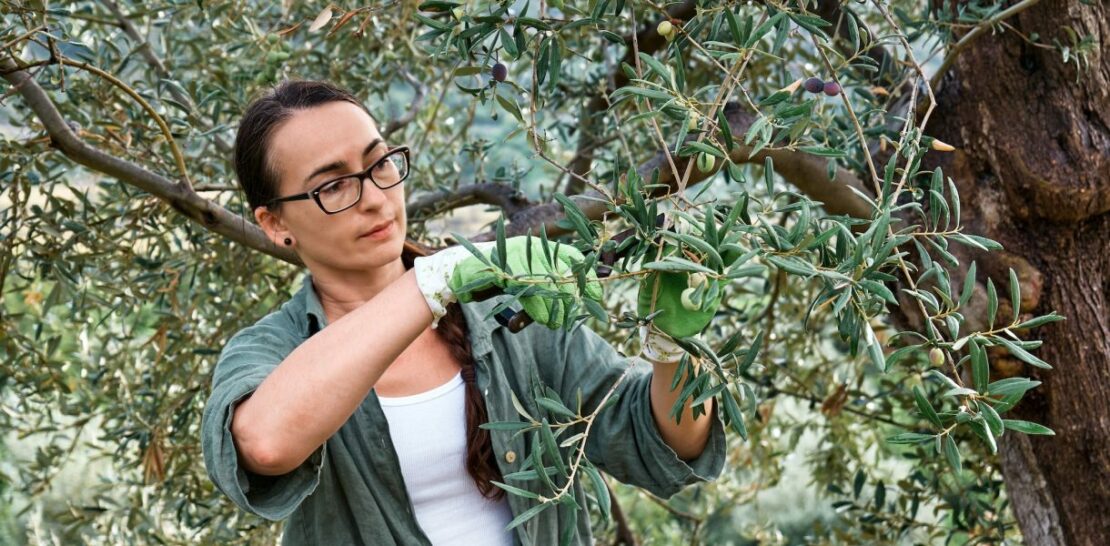Pruning olive trees is an essential practice, ensuring the health and productivity of these ancient and revered plants.
In order to achieve the best results, it is crucial to understand the intricacies of olive pruning and the techniques involved.
This article aims to provide an in-depth and practical guide to successful olive pruning, covering various aspects such as the reasons for pruning, when to do it, and the different methods and tools employed.
We will also delve into some common mistakes and the ways to avoid them.
So, without further ado, let’s embark on a journey to mastering the art of olive pruning.
The Importance of Pruning Olive Trees
First and foremost, let’s explore why pruning is such an essential practice for olive trees.
- Health and vigor: Regular pruning helps maintain the overall health and vigor of the tree, ensuring it is resilient against diseases and pests. By removing dead or diseased branches, you prevent the spread of pathogens and create a stronger, healthier plant.
- Light and air circulation: By removing excess foliage, you create a more open canopy structure that allows sunlight and air to penetrate into the tree. This not only helps the tree’s photosynthesis process but also reduces the chances of fungal diseases breeding in overly dense foliage.
- Productivity: Pruning is a key factor in increasing the yield of an olive tree. By removing unproductive or weak branches, you direct the tree’s energy towards the production of healthy, fruitful growth. Furthermore, pruning can help improve fruit quality, as the tree can dedicate more energy and resources to the remaining fruit.
- Shape and size management: Pruning is essential for controlling the shape and size of the tree, making it more manageable and aesthetically pleasing. Pruning also ensures the tree’s structural integrity, preventing branches from becoming too heavy or overcrowded.
Determining the Right Time to Prune
Timing is a crucial aspect of olive pruning, with different seasonal factors dictating the best time to prune for various reasons.
- Winter pruning: The ideal time for most pruning tasks is during the dormant season, usually between November and February. During this period, the tree’s energy reserves are focused on root growth, making it the perfect time to remove excess growth and shape the tree without causing undue stress.
- Spring pruning: While winter is the best time for most pruning tasks, some light pruning can be done in early spring, particularly in colder climates where frost may still be a risk. Focus on removing dead or damaged growth, as well as thinning the canopy to improve light and air circulation.
- Summer pruning: Olive trees can also be pruned during the summer months; however, this is generally reserved for more experienced growers or for specific purposes, such as reducing the tree’s water requirements during drought or managing excessive growth in certain areas of the canopy. It is important to avoid heavy pruning during this period, as the tree’s energy should be focused on fruit production.
- Autumn pruning: Pruning should generally be avoided during autumn when the tree is preparing for the dormant season and conserving energy. However, if necessary, light pruning can be done to remove any broken or diseased branches that may pose a risk to the tree’s health.
Essential Olive Pruning Techniques and Tools
Now that we’ve established the importance of pruning and the ideal times to do so, let’s explore the various techniques and tools involved in the process.
Techniques: There are several pruning techniques used in olive tree maintenance, each serving a specific purpose and requiring a unique approach.
- Thinning: Thinning is the process of removing branches to create a more open canopy structure, improving light penetration and airflow within the tree. This can be achieved by removing branches that cross or rub against each other, as well as removing branches that grow inwards towards the tree’s center.
- Heading back: Heading back refers to the shortening of branches, encouraging the tree to produce more lateral growth. This technique is useful for maintaining the desired shape and size of the tree, as well as promoting fruit production on the remaining branches.
- Skirting: Skirting is the removal of low-hanging branches, which can hinderaccess to the tree and create favorable conditions for pests and diseases. This technique not only improves the overall appearance of the tree but also makes it easier to maintain and harvest.
- Renewal pruning: Renewal pruning is a more drastic technique, involving the removal of large branches or even entire sections of the tree to stimulate new growth. This method is typically used to rejuvenate old or unproductive trees, or to correct severe structural issues.
Tools: Equipping oneself with the right tools is essential for efficient and successful olive pruning. Here are some of the most commonly used tools in the process:
- Hand pruners: Hand pruners are an indispensable tool for any olive tree pruner. These small, handheld shears are perfect for making precise cuts on branches up to 1 inch in diameter. Opt for a high-quality, bypass-style pruner with sharp blades to ensure clean and precise cuts.
- Loppers: Loppers are similar to hand pruners but have longer handles and larger blades, making them suitable for cutting branches up to 2 inches in diameter. These tools are ideal for making larger cuts or reaching higher branches without the need for a ladder.
- Pruning saws: Pruning saws are designed to tackle branches larger than 2 inches in diameter, making them an essential tool for more extensive pruning tasks. Choose a saw with a curved blade and sharp teeth for efficient cutting.
- Pole pruners: Pole pruners are perfect for reaching high branches without the need for a ladder. These tools consist of a long pole with a pruning head at the end, either a lopper or saw attachment. Some models even offer telescopic poles for added reach.
Avoiding Common Olive Pruning Mistakes
Pruning olive trees can be a delicate and complex process, with the potential for mistakes to negatively impact the tree’s health and productivity. Here, we will discuss some of the most common mistakes and how to avoid them.
- Over-pruning: Over-pruning can be detrimental to the tree’s health, as it can deprive the tree of essential resources and weaken its overall structure. To avoid this, refrain from removing more than 25% of the tree’s foliage in a single pruning session, and always prioritize the removal of dead, diseased, or weak branches over healthy growth.
- Improper timing: As discussed earlier, timing is crucial when it comes to olive pruning. Pruning at the wrong time can lead to reduced fruit production, increased vulnerability to pests and diseases, or even damage from frost. Ensure that you follow the seasonal guidelines outlined earlier in this article to prevent these issues.
- Rough cuts: Making rough or jagged cuts can create entry points for pathogens and pests, as well as slow down the tree’s healing process. To avoid this, always use sharp and well-maintained tools, and make smooth, clean cuts that are angled away from the trunk or remaining branch.
- Neglecting structure: Failing to consider the tree’s overall structure when pruning can lead to overcrowding, poor airflow, and reduced light penetration. To prevent these issues, always aim for a balanced and open canopy, removing crossing or inward-growing branches and encouraging outward growth.
In conclusion, olive tree pruning is an essential and rewarding task that, when executed correctly, can significantly enhance the health, aesthetics, and productivity of these cherished plants. By understanding the importance of pruning, the ideal timing, the various techniques and tools involved, and the common mistakes to avoid, you can become a true master of the art of olive pruning. With patience and practice, you will be well on your way to reaping the fruits of your labor in the form of a flourishing and bountiful olive tree.




